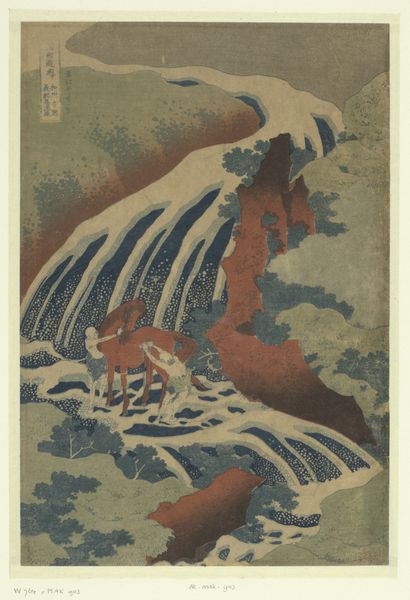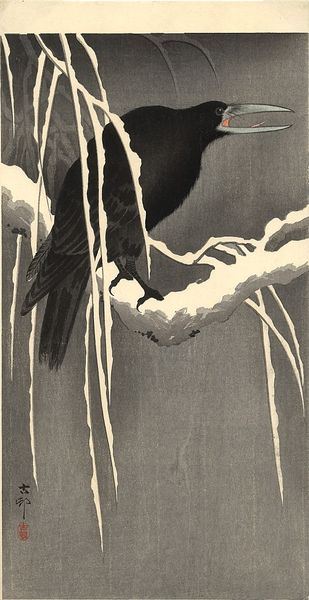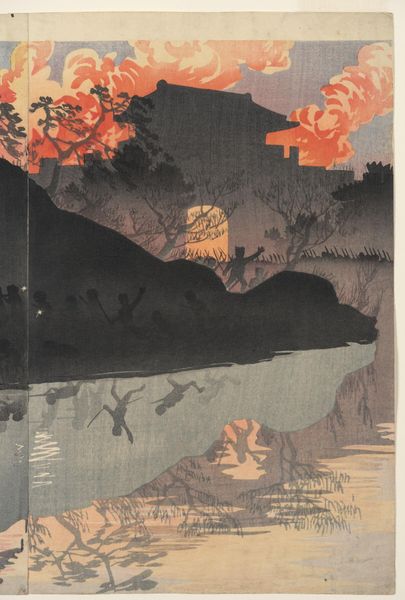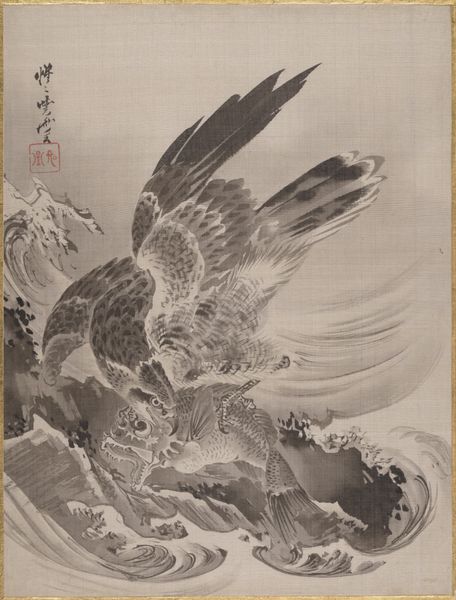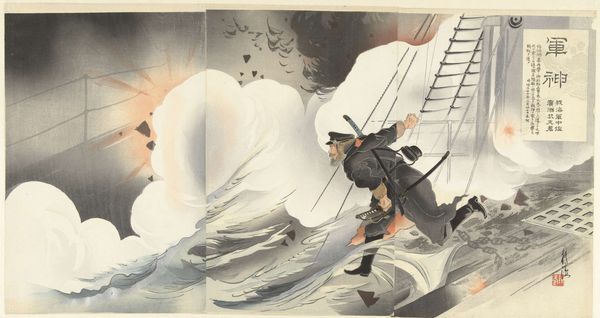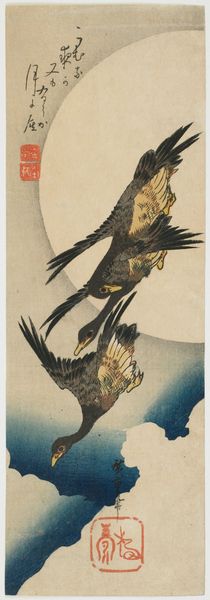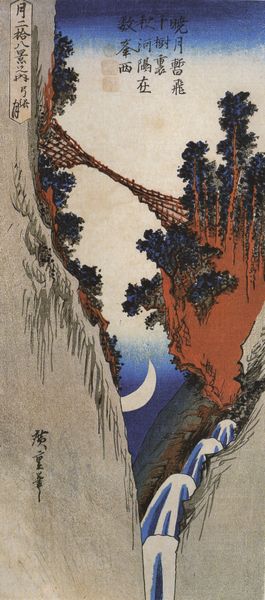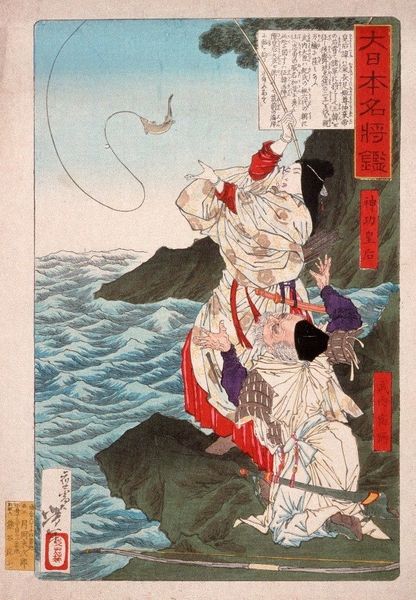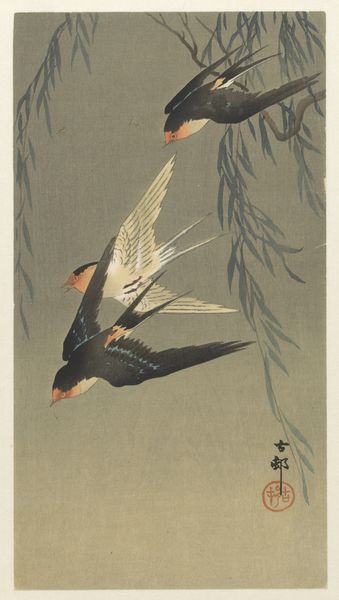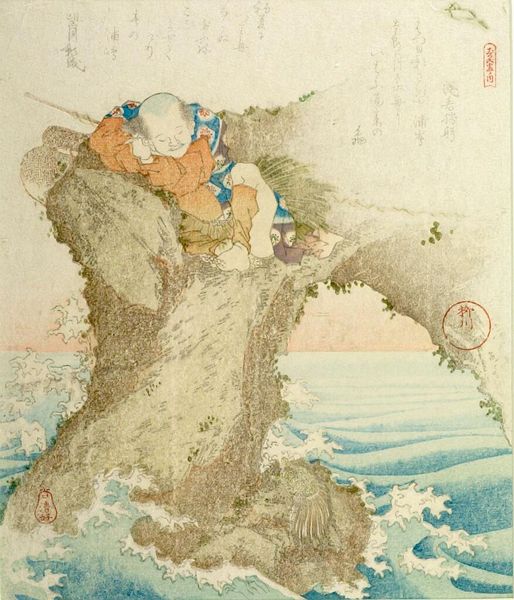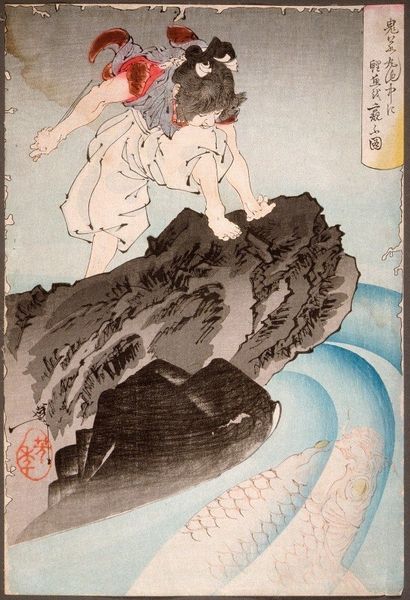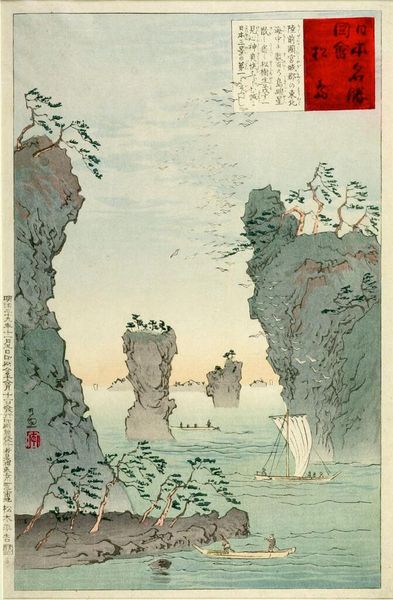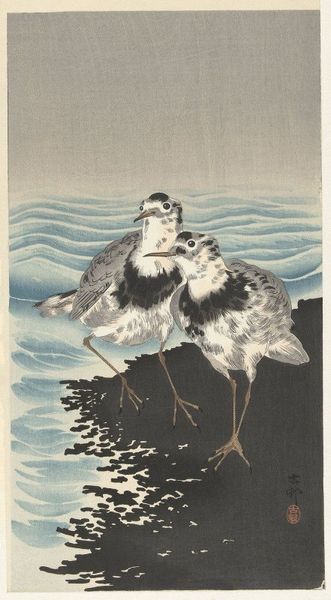
print, woodblock-print
asian-art
landscape
bird
ukiyo-e
woodblock-print
Copyright: Public domain
Curator: This work captures a feeling of wildness, doesn’t it? The ocean waves, the stark rocks… Editor: Indeed! What we're seeing is "Sandpipers and Moon," a woodblock print by Ohara Koson, though its precise date is unknown. The scene depicts several sandpipers perched atop a dark, imposing rock formation with a pale, obscured moon or sun looming in the sky. The restless ocean batters the rocks below. It's deceptively simple but masterfully evocative. Curator: I find the juxtaposition of those lively birds with the solidity of the cliffs particularly interesting. They almost appear as punctuation marks on this dramatic coastline. There is a long tradition of avian symbolism, so, I'm compelled to see the birds as embodiments of freedom and transience against the unyielding backdrop. The single bird, seemingly squawking, on the cliff's edge gives off such nervous tension... Editor: The influence of *ukiyo-e*, or "pictures of the floating world," is obvious here. Consider the social and artistic context; ukiyo-e prints became incredibly popular among the merchant class in Japan, reflecting their growing prosperity and a desire for accessible art. Prints like these also found their way into Western collections, contributing to the wider phenomenon of Japonisme. Curator: Japonisme, the Western mania for Japanese art! Absolutely, it embodies that perfectly. But to look at it symbolically, I'm also struck by the contrast of shadow and light—the ominous rocks and then this luminescence. We find that symbolic dichotomy echoed time and again throughout art history, signaling both the seen and unseen, the physical and the spiritual. I think that tension helps give this work its arresting power. Editor: The medium itself, the woodblock print, played a huge part. Each line is so deliberately carved, allowing for the creation of mass reproducible images. Koson certainly took advantage of this craft to communicate to a wide audience. In a way, "Sandpipers and Moon" encapsulates both an intimate observation of nature and a savvy engagement with the art market of his time. Curator: I agree wholeheartedly! We might look at it as a snapshot, but it clearly engages with much broader human concerns. A reflection on humanity's place within nature, our fears, and our hopes for renewal. Editor: Precisely! "Sandpipers and Moon" reminds us that art isn't simply decorative. It engages in cultural and intellectual movements. A lens through which we observe and perhaps subtly re-orient ourselves in time.
Comments
No comments
Be the first to comment and join the conversation on the ultimate creative platform.
